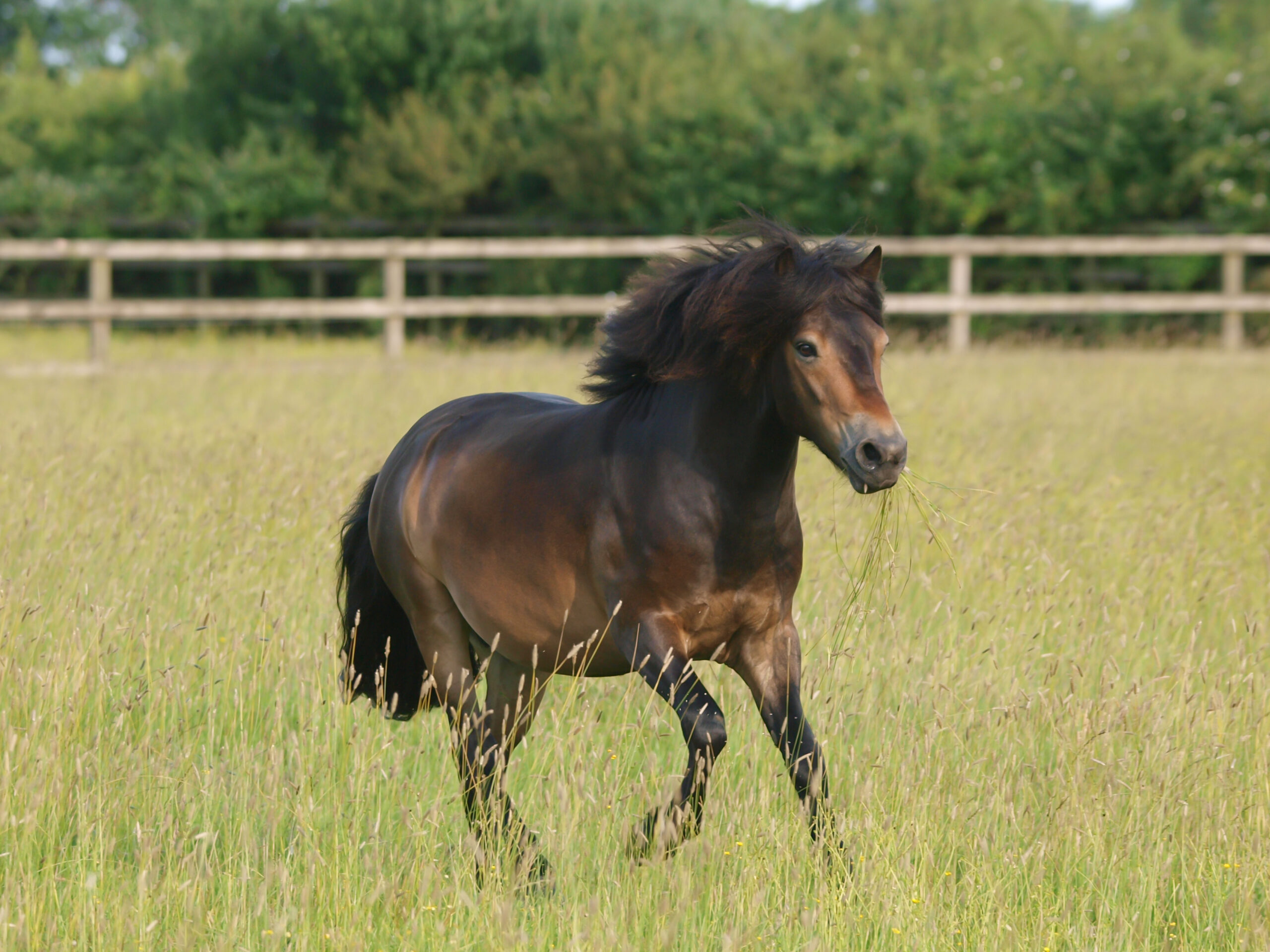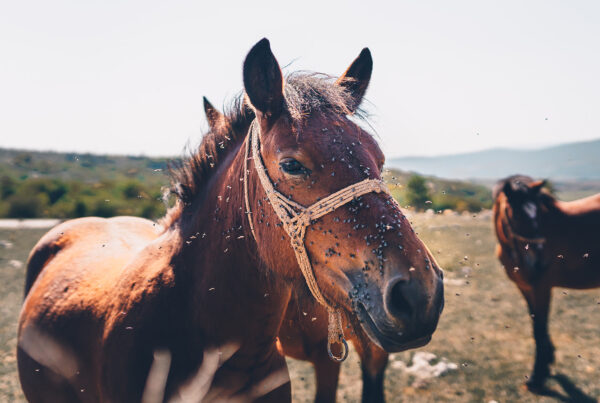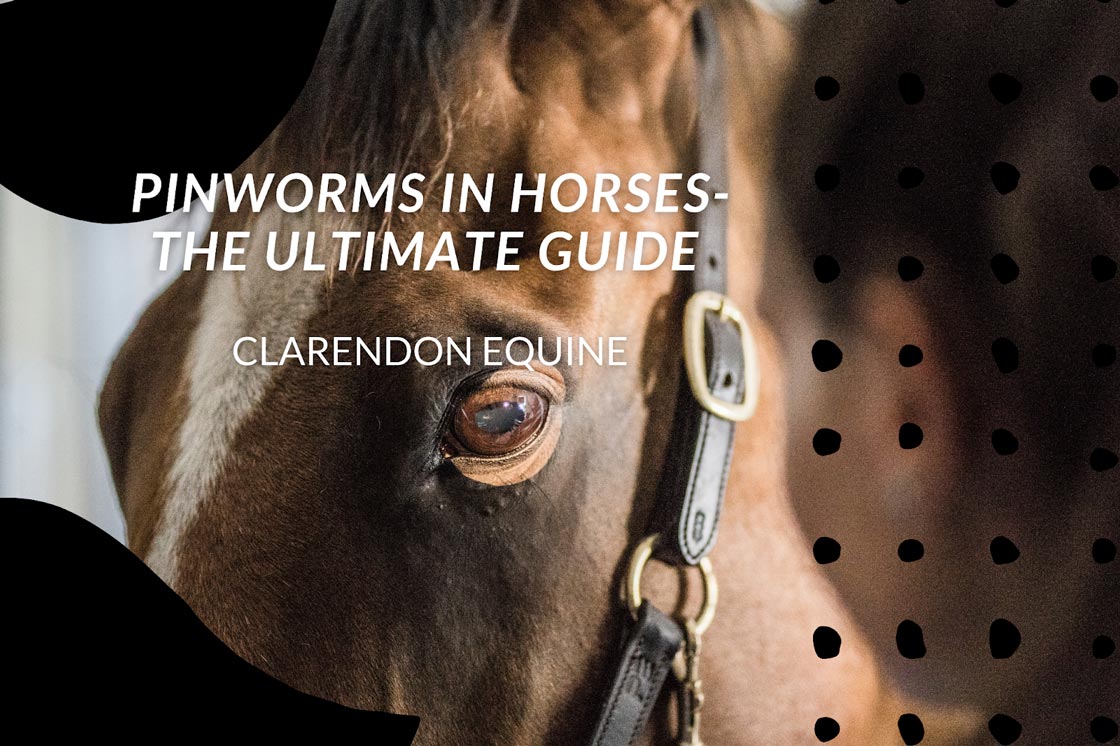Laminitis was historically considered a hoof disease, but it is now better understood as a clinical syndrome often associated with underlying systemic (whole body) disease. In fact, while laminitis can be caused by toxemia/sepsis or abnormal weight bearing (for example when the opposite leg is injured), around 90% of laminitis cases are linked to endocrine (hormonal) causes such as Equine Metabolic Syndrome (EMS) or Cushing’s disease (PPID).
The role of the endocrine system
While links between these endocrine diseases and laminitis have long been known, the extent of their involvement is now better understood and this is significant in terms of how we diagnose, treat and prevent laminitis. Recent studies indicate that if we can identify patients with these diseases early, simple management changes can markedly reduce the risk of them going on to develop laminitis. And when it comes to laminitis, it definitely is a case of prevention being better than cure.
It should be noted that, while most studies refer to horses, donkeys are also commonly affected by laminitis and endocrine disease and should be afforded equal care when it comes to risk assessment, management and treatment.
No “safe” season
2019 research, conducted by the Animal Health Trust in collaboration with Rossdales Equine Hospital and funded by World Horse Welfare, found laminitis to be as common as colic, with 1 in 10 horses affected each year and sadly around 15% of equine deaths in the UK considered to be linked to laminitis in some way. The study also found there to be no “safe” season with regard to laminitis, which was previously considered to be a spring-time disease, most likely due to the role of endocrine diseases.
Endocrine disease action
Both Equine Metabolic Syndrome (EMS) and Cushing’s disease (PPID – Pituitary Pars Intermedia Dysfunction) are endocrine diseases, and both feature insulin dysregulation (ID). Insulin is a hormone which normally controls the rate at which cells can absorb sugar (glucose) from the blood. Where insulin dysregulation (ID) occurs, resting insulin levels in the body become high and the cells don’t respond as much to this insulin – this is similar in some ways to Type II diabetes in humans, although the effects in horses are quite different. Additionally, there is an exaggerated insulin response by the body after eating, resulting in even higher levels of insulin in circulation. This insulin response is typically associated with laminitis.
Identifying endocrine disease
The classic picture of Equine Cushing’s disease would be that of an older pony with a long curly coat that doesn’t shed properly after winter. The pony may be lethargic, sweat unusually (i.e. not due to weather or exercise), drink and urinate more, and lose muscle condition over the topline while also developing pockets of fat unevenly across the body. Recurrent infections may also be seen. If Cushing’s disease is suspected, a blood sample is usually taken to measure ACTH levels and confirm the diagnosis.
Horses with Equine Metabolic Syndrome may be of any age, but are typically significantly overweight individuals who struggle to lose weight and often have similar pockets of fat unevenly distributed across the body. They lack the curly coat of Cushing’s disease but are often lethargic, drinking more and urinating more. Again, a blood sample will usually be taken to confirm diagnosis, this time by measuring insulin and glucose levels.
While these may be the typical characteristics of patients with clinical endocrine disease, a recent study carried out by the Royal Veterinary College (RVC) has found that physical appearance is not an accurate predictor of these diseases nor the associated risk of developing laminitis. As not every horse displays all of these symptoms, and the early stages can be very subtle, we recommend blood tests to confirm the diagnosis in any patient who may fit into these categories, especially if laminitis is already present.
Measuring Insulin
Measuring blood insulin levels has now been shown to accurately predict risk of future laminitis and ponies can be identified as low, medium or high risk for laminitis based on their sample results. In the RVC study, over a 4-year period, only 6% of ponies in the low-risk category developed laminitis while in the high-risk category, around 70% of ponies would be expected to develop laminitis unless management changes were implemented to reduce the risk.
ACTH (an indicator of Cushing’s disease) was also looked at, however it was not found to be as useful in predicting laminitis risk.
These findings are significant because they show we can use insulin measurements to help identify many horses and ponies that do not yet have clinically apparent signs of endocrine disease, many of whom would not even be considered to be overweight, but who DO have insulin dysregulation, placing them at increased risk of laminitis.
Another significant finding of the study was that ponies who undertook more exercise (even low-intensity exercise) were less commonly found to have insulin dysregulation and were therefore at lower risk of laminitis.
Treatment
When laminitis does occur, early aggressive treatment is key to optimising outcomes and protecting animal welfare. If you suspect signs of laminitis, do not hesitate to call us and speak to one of our vets for advice or to arrange a visit. A laminitis assessment checklist is also available here.
Treatment for laminitis involves providing pain relief, rest and hoof support, while also addressing any underlying disease.
When Cushing’s disease is present, your vet may prescribe medication to help manage hormone release from the pituitary gland and reduce insulin dysregulation. Although Cushing’s disease cannot be cured, ongoing medication aims to reduce the risk of developing laminitis while also controlling symptoms of Cushing’s disease if they are present. Discuss diet with the vet too, as keeping your horse in optimum body condition will help.
Equine metabolic syndrome can be reversed but it is not easy! Work with our vets to develop a nutrition and exercise plan aimed at improving insulin sensitivity, reducing weight and minimising risk of laminitis.
Preventing Laminitis
- Recognise risk and endocrine disease – speak to your vet about booking a health check and consider blood samples where appropriate to identify laminitis risk, EMS or Cushing’s.
- Assess body condition honestly – we’re not so much looking at weight here but body condition or fat scoring. Ask your vet about this or use the British Horse Society guide here. Regular condition scoring can help identify trends in your horse’s health.
- Assess diet for weight loss as well as sugar content. This includes restricting access to grass at high-risk periods, or when endocrine disease is not well controlled. Your vet is ideally placed to give bespoke advice for your horse based on their particular circumstances, health status, laminitis risk level and pasture/feed availability.
- Increase exercise – providing your horse is not otherwise lame or unwell, and that there are no signs of laminitis already present.
- Talk to your farrier. The farrier is well placed to check for signs of laminitis in the hooves themselves. Farriers can also be invaluable when managing ponies that have previously had laminitis and we will work together especially if x-rays have been taken and remedial trimming/shoeing is indicated.
- Do not ignore mild signs of laminitis such as tenderness after hoof trimming. Early intervention is so crucial to achieving positive outcomes.
- Be informed and prepared. Follow some of the links below for further information on laminitis and endocrine disease but, above all, speak to your vet for advice. Prevention, especially where laminitis is concerned, is always better than cure.
Contact us to discuss laminitis, endocrine disease, or any other aspect of your horse’s health.
Further reading
Understanding Laminitis leaflet from University of Liverpool









